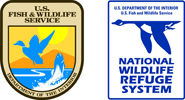Earth Science Week Classroom Activities
Celebrate Wilderness

Activity Source:
U.S. Fish & Wildlife Service. Adapted with permission.
The Wilderness Act, signed into law September 3, 1964, celebrates its milestone 50th anniversary in 2014. The legislation poetically defines this natural resource: “A wilderness, in contrast with those areas where man and his own works dominate the landscape, is hereby recognized as an area where the earth and community of life are untrammeled by man, where man himself is a visitor who does not remain.”
Today, the National Wilderness Preservation System contains more than 109.5 million acres in 44 states and Puerto Rico, protecting just about five percent of the nation’s most beautiful lands. Under the Wilderness Act, only Congress can designate “wilderness,” where people can connect with nearly untouched nature.
The National Wildlife Refuge System has roughly 20 million acres of wilderness in 63 locations. Most of the wilderness is in Alaska. To learn more about wilderness, go to www.wilderness.net/ or the National Wildlife Refuge System.
Materials
- Computer with Internet access
- Paper and pen or pencil
Procedure
-
Go online to the National Wildlife Refuge System web site (www.fws.gov/refuges/refugelocatormaps/). Find out whether there is a refuge near you. If so, visit a refuge, perhaps one with a designated wilderness, or a wild place in your community.
-
If this is not possible, conduct online research about a wildlife refuge near you or email a ranger at a nearby refuge or park. Find a map of the site.
-
Investigate and record your answers to key questions about this site:
- What people lived here before the Europeans came?
- Did these people live in villages or did they move their homes to follow and hunt animals? Draw a picture of where they might have lived.
- What things might these people have eaten, such as roots, berries, or buffalo? List or draw a picture of those things.
- Do these people or their descendants still live here or near here? Indicate how they live differently now.
-
Here are additional questions you can explore: Did the people living in the wilderness have their own names for any of the natural features such as mountains, rivers, or valleys? What was one of those names? Is this name different than the one on the park map?
